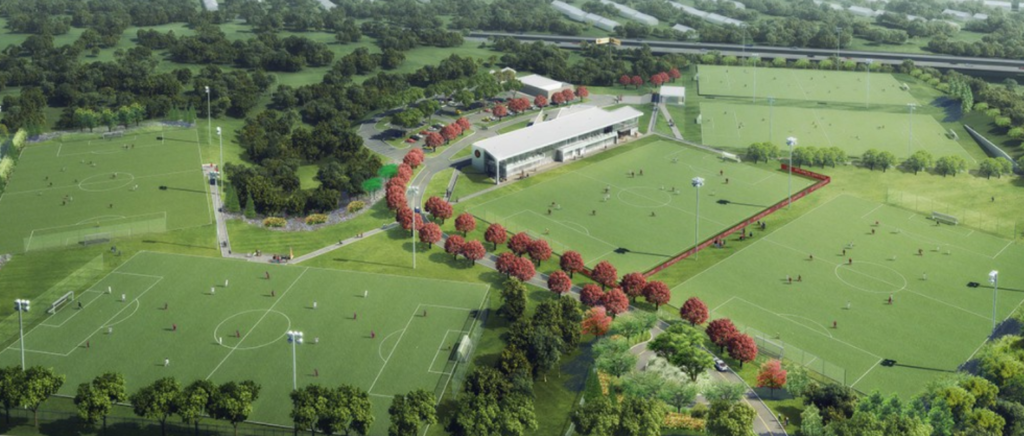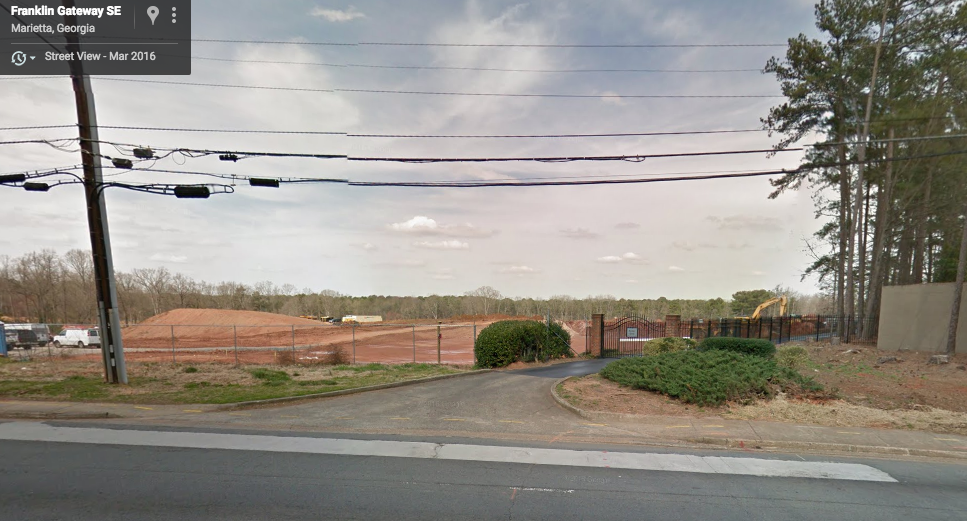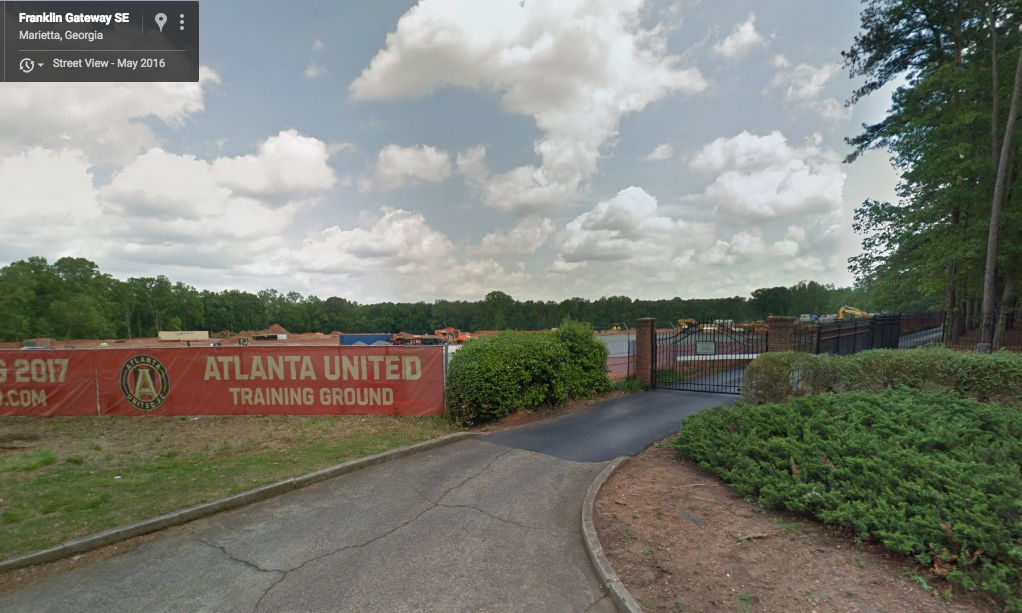Just say the words “urban renewal” and you immediately conjure up images of whole neighborhoods–usually populated by poor families and people of color being dislocated by big new publicly funded development projects. It seems like a relic of the past. But it appears to be getting a new lease on life in the suburbs. For a couple of years now, we’ve been following the story of Marietta, Georgia, where local officials used $65 million in taxpayer funds to buy up and begin demolishing some 1,300 apartments along Franklin Road. This is a striking case where the displacement of low income families was an explicit objective of public policy, rather than the side-effect of a changing real estate market. The tale raising some interesting questions about how we talk about neighborhood change, and whether we’re really open to economic integration in all places–city and suburb.
In a few weeks, the new Atlanta United franchise of Major League Soccer will kick off its inaugural season. The team’s been preparing at the verdant practice facility in the Atlanta suburbs.

What isn’t apparent from this picture is the fact that hundreds of old but serviceable apartments were demolished to make way for these spacious fields. The Marietta apartment complexes had been built in the 1960s, and, when new, were a preferred upscale location for single professionals and young married couples. Over the decades, the apartments aged and the mix of occupants changed. Franklin Road shifted to families with increasingly modest incomes—a process housing economists call filtering, which is the primary source of affordable housing throughout the nation. Along the way, the economic and and racial makeup of the apartments transformed from nearly 90 percent white in 1980, with a poverty rate around five percent, to 20 percent white in 2010, with a poverty rate of nearly 25 percent.
Despite the usefulness of filtering, which increased the diversity of suburban Marietta, the city perceived these units as growing concentrations of poverty and, thus, a problem. So it used the proceeds of a voter-approved bond measure to purchase and begin demolishing the housing complexes. It’s worth noting that no one ever claimed that the buildings themselves were a problem, despite their age. Rather, it had everything to do with the demographics of their occupants. In all, the city’s plan calls for acquiring and demolishing almost 10 percent of the city’s multi-family housing stock.
Caution: This post contains graphic images of housing displacement. Viewer discretion is advised.
Marietta’s plan is proceeding apace. The city re-christened Franklin Road as “Franklin Gateway” to signal change. It began demolishing the apartments last year. Here, we’ve used imagery from Google Maps show what’s happened where one of these complexes—the Woodland Park Apartments—once stood. This is what they looked like in 2011.

Early this year, the demolition was nearly complete. All that remains of the old apartment complex is its driveway, a partial brick wall and metal gate, and two patches of evergreen shrubbery, flanked by a stand of pine trees.

The latest Google imagery shows the city’s unfolding plan for development. The site will become the training facility for Atlanta United, the area’s new major league soccer team. For use of the 32 acres formerly covered by apartments, the team will pay the city $1 per year for the first ten years of a thirty-year lease.

The demolition of the apartments on Franklin Road represents a kind of national blind spot when it comes to talking about neighborhood change. In any large city—say New York, Los Angeles or Washington—the wholesale demolition of affordable housing to provide discounted land for new businesses would undoubtedly be treated as the most pernicious form of gentrification. But because it happens in a suburb, somehow it doesn’t count, or at least isn’t objectionable.
Perhaps this reflects a deeply ingrained but seldom-voiced bias in our views about place: Suburbs are for rich, mostly white people. Cities are for poorer people and people of color. Anything change that runs counter to this worldview (like gentrification of a Brooklyn neighborhood, or efforts to build affordable apartments in suburbs like Marin County) is an affront to the order of things. The apparent prevalence of this outlook shows just how hard it will be to make progress on economic integration.
